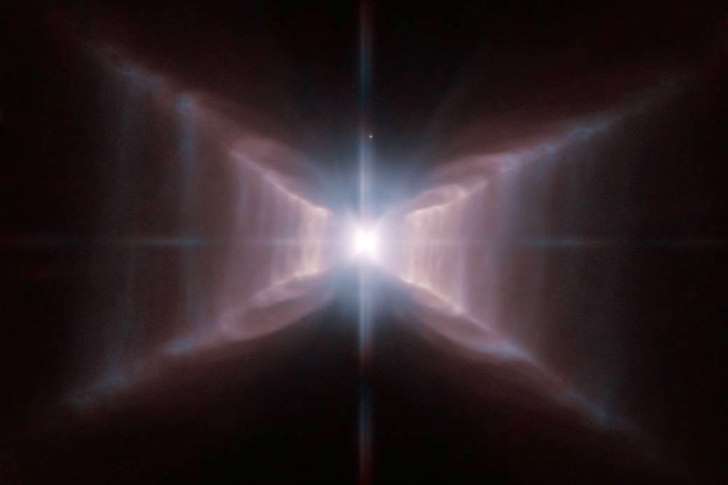April 8, 2016
The supermassive black hole was yesterday's news. On Friday, NASA released an image of a star surrounded by a curious, rare red rectangle.

The star HD 44179 is surrounded by an extraordinary structure known as the red rectangle. It acquired its name because of its shape and its apparent color when seen in early images from Earth. – ESA/Hubble and NASA
April 8, 2016
The supermassive black hole was yesterday's news. On Friday, NASA released an image of a star surrounded by a curious, rare red rectangle.

The star HD 44179 is surrounded by an extraordinary structure known as the red rectangle. It acquired its name because of its shape and its apparent color when seen in early images from Earth. – ESA/Hubble and NASA
Though the red rectangle has been seen and photographed before, this is the sharpest view yet, according to NASA.
The star, with the catchy name HD 44179, is some 2,300 light-years away from Earth in the barely-visible constellation Monoceros (Greek for unicorn).
The red rectangle is an unusual example of what is known as a "proto-planetary nebula," according to NASA. The star is similar to our sun, but it's nearing the end of its life and is on its way to becoming a planetary nebula.
Planetary nebulae are expanding, glowing shells of gas ejected from old stars late in their lives. It's the stage during which a red giant star transforms into a white dwarf star.
The reason for its rectangular appearance is because we're seeing the nebula from an unusual angle. The star is likely shooting out cone-shaped gas clouds, which to us seem to form a rectangle, NASA said.
The image was taken from a camera aboard the Hubble Space Telescope, which is in orbit around the Earth. The nebula is not visible to the naked eye.
Courtesy: USA Today
















































































































